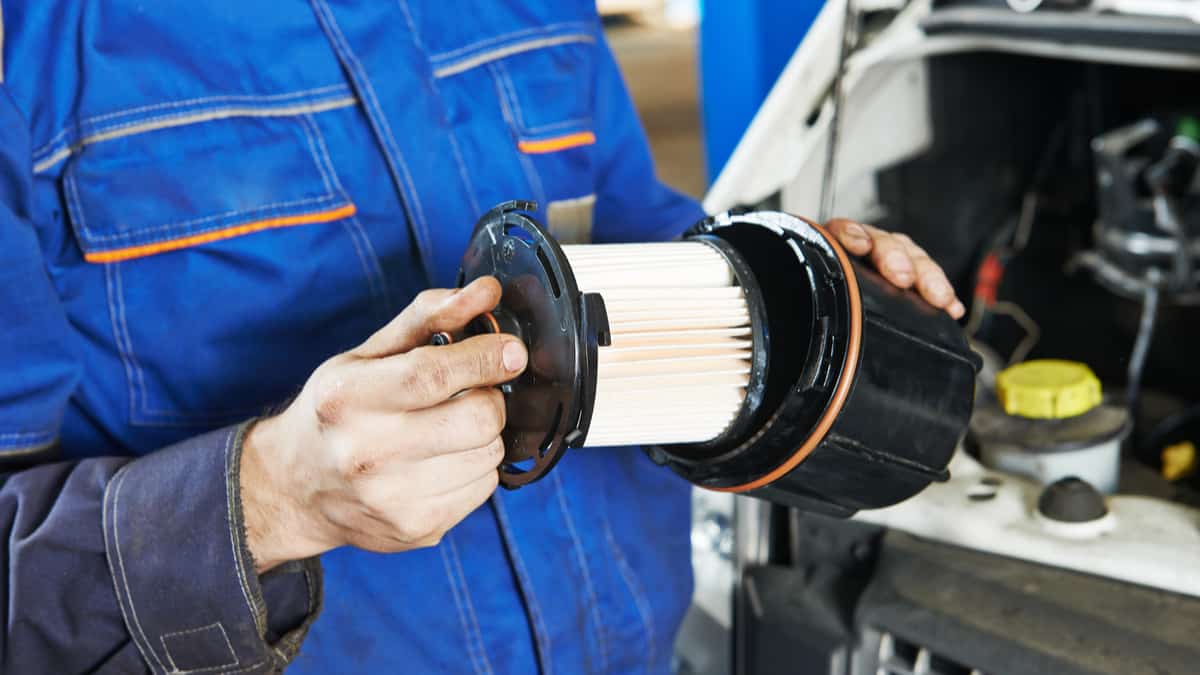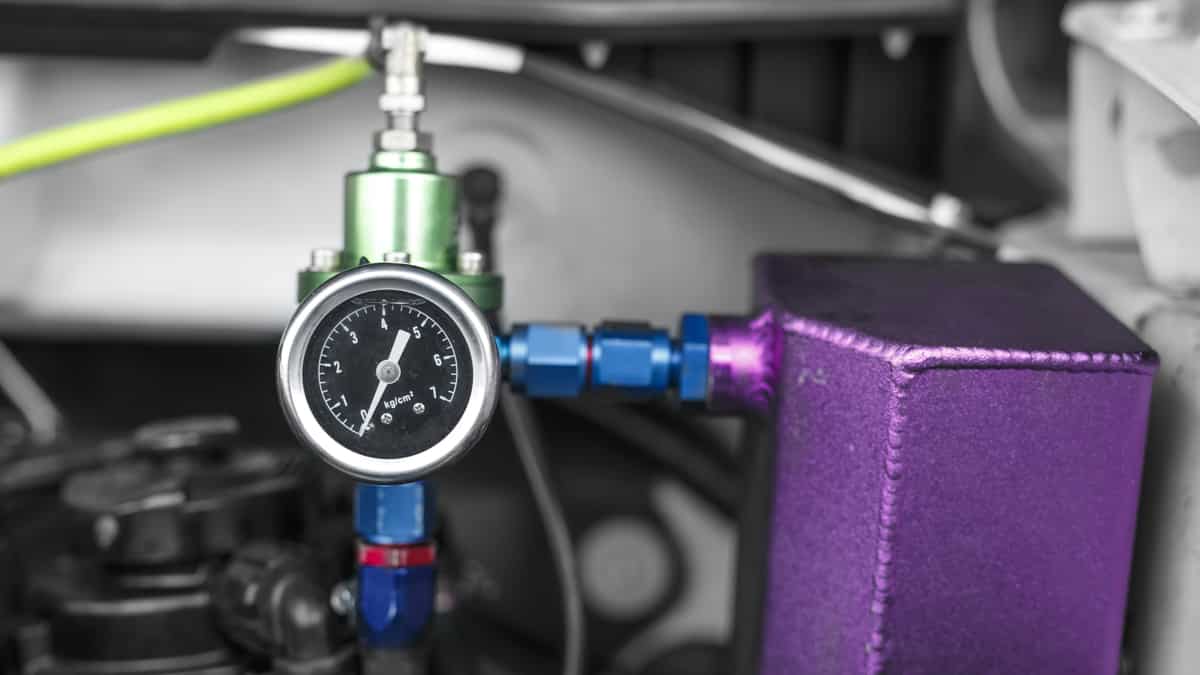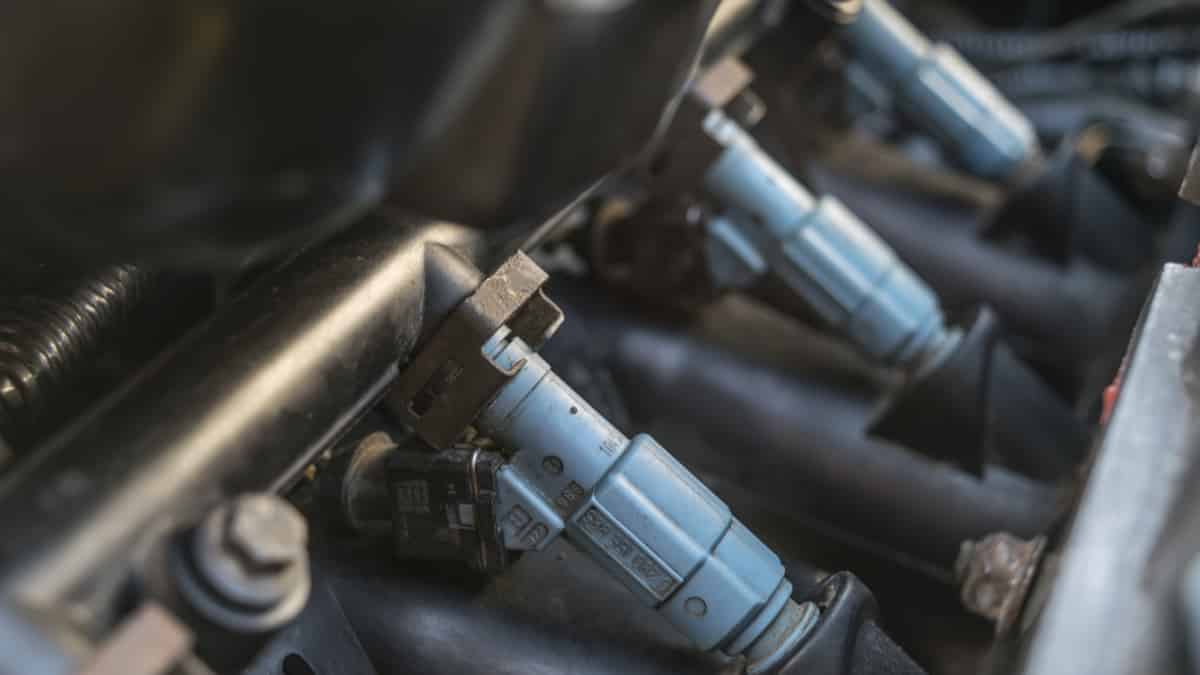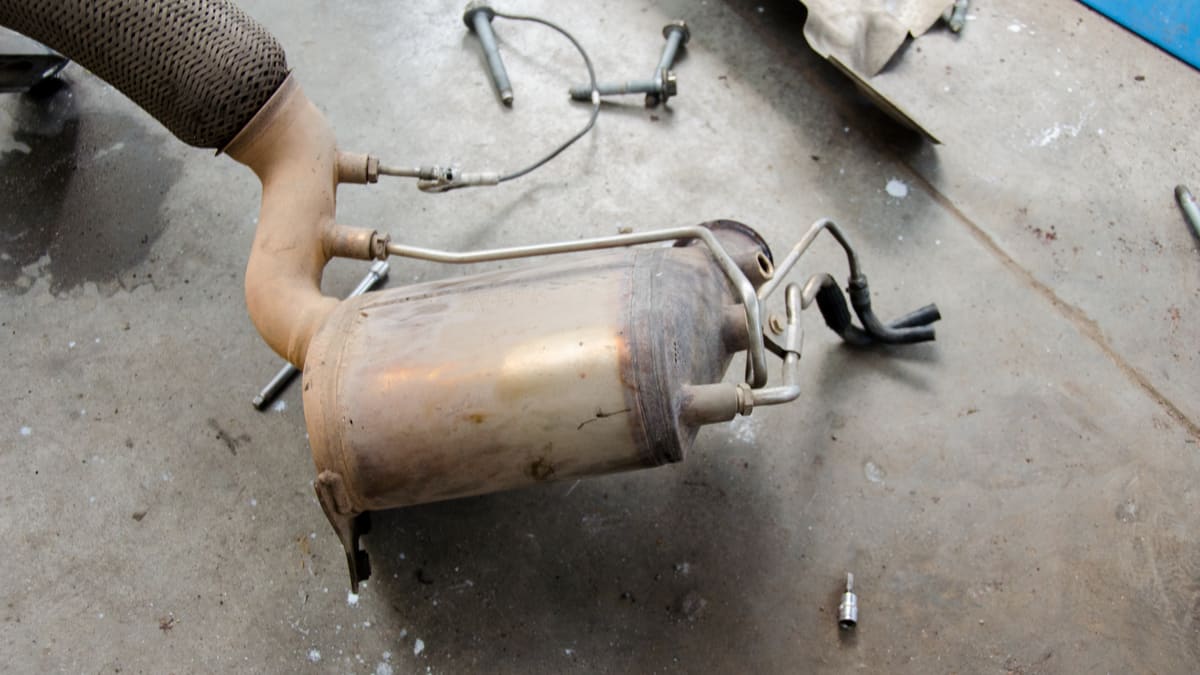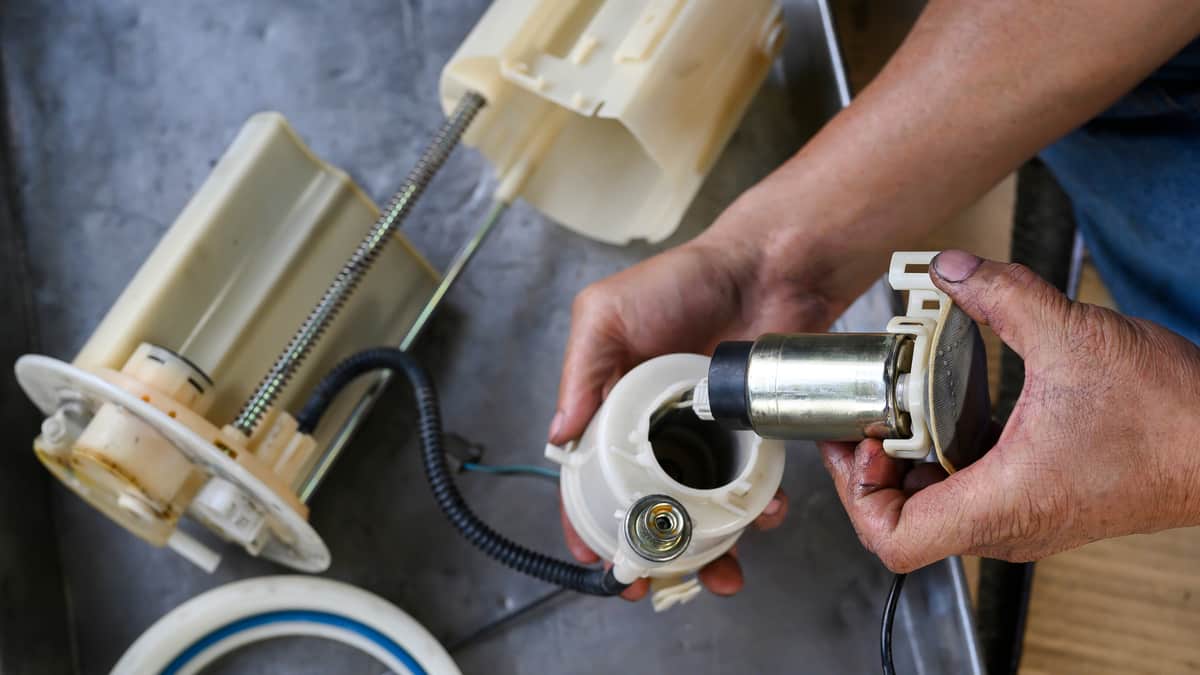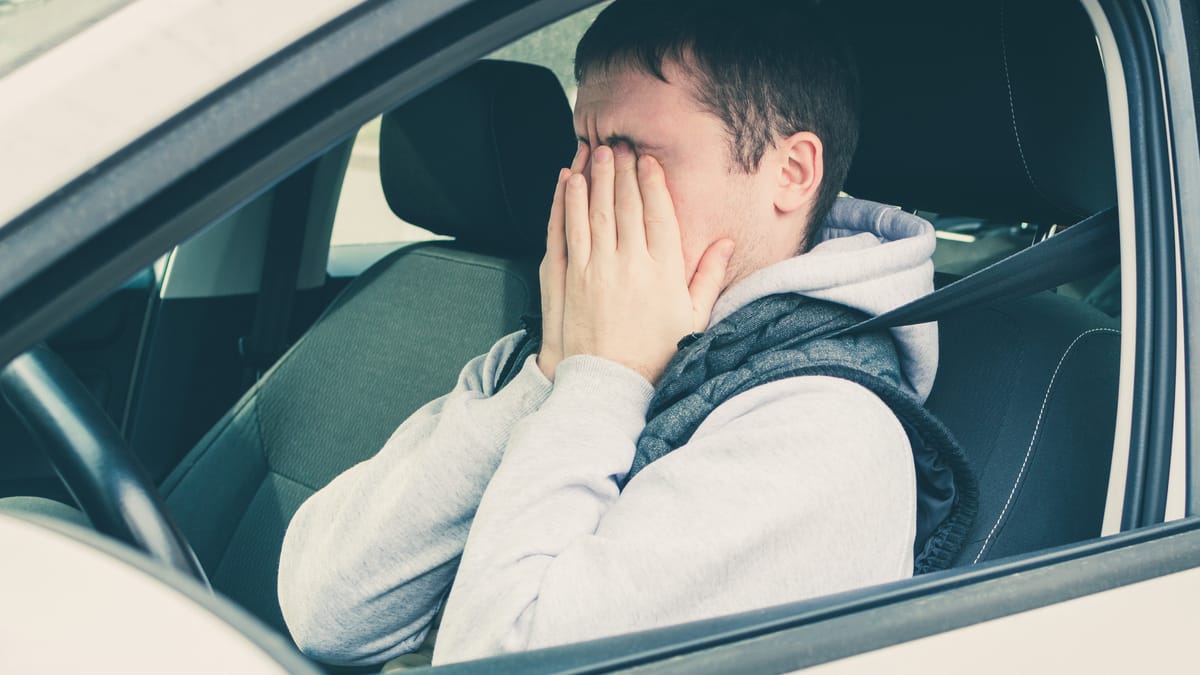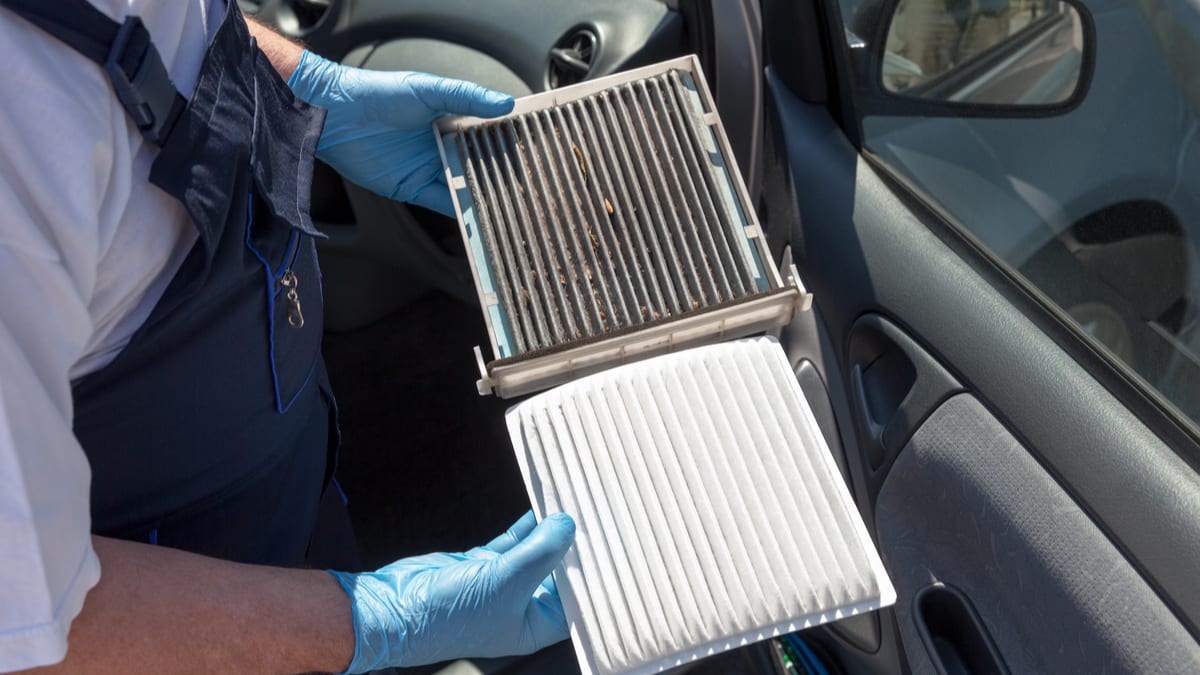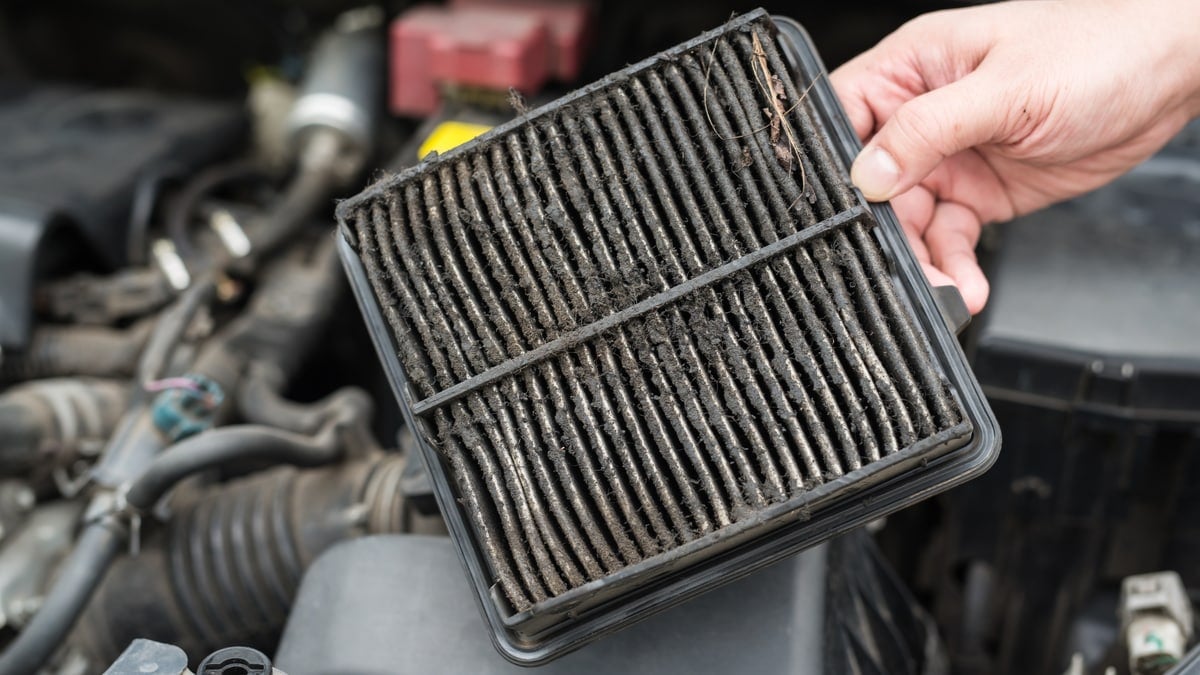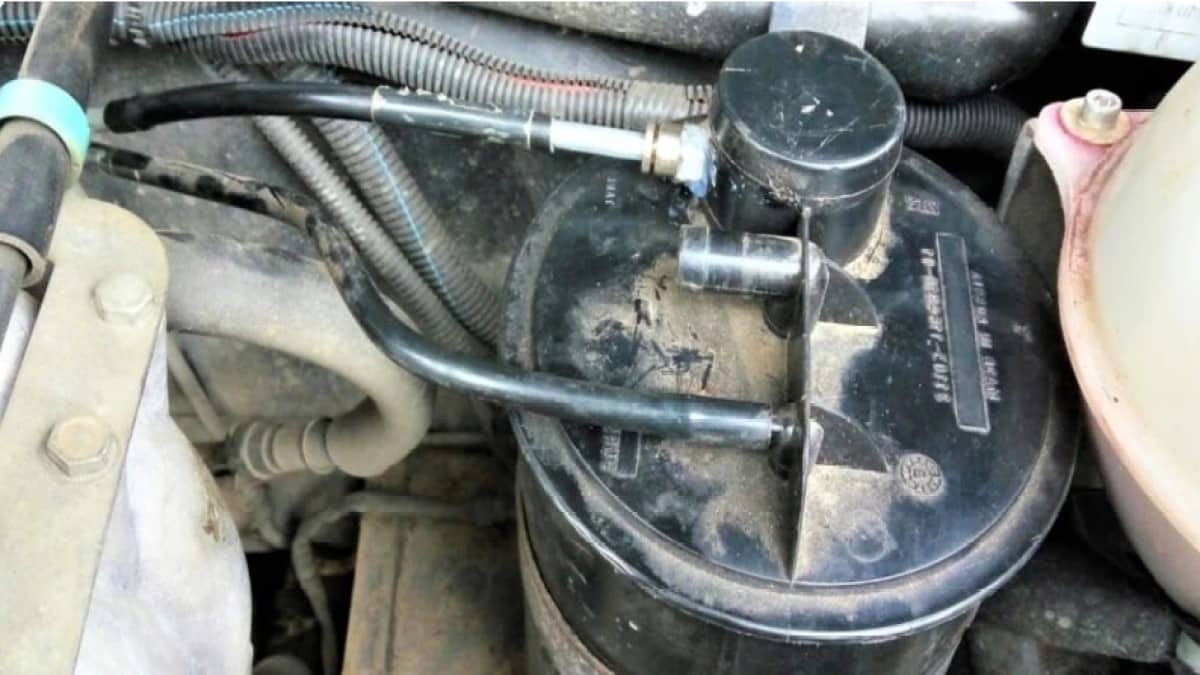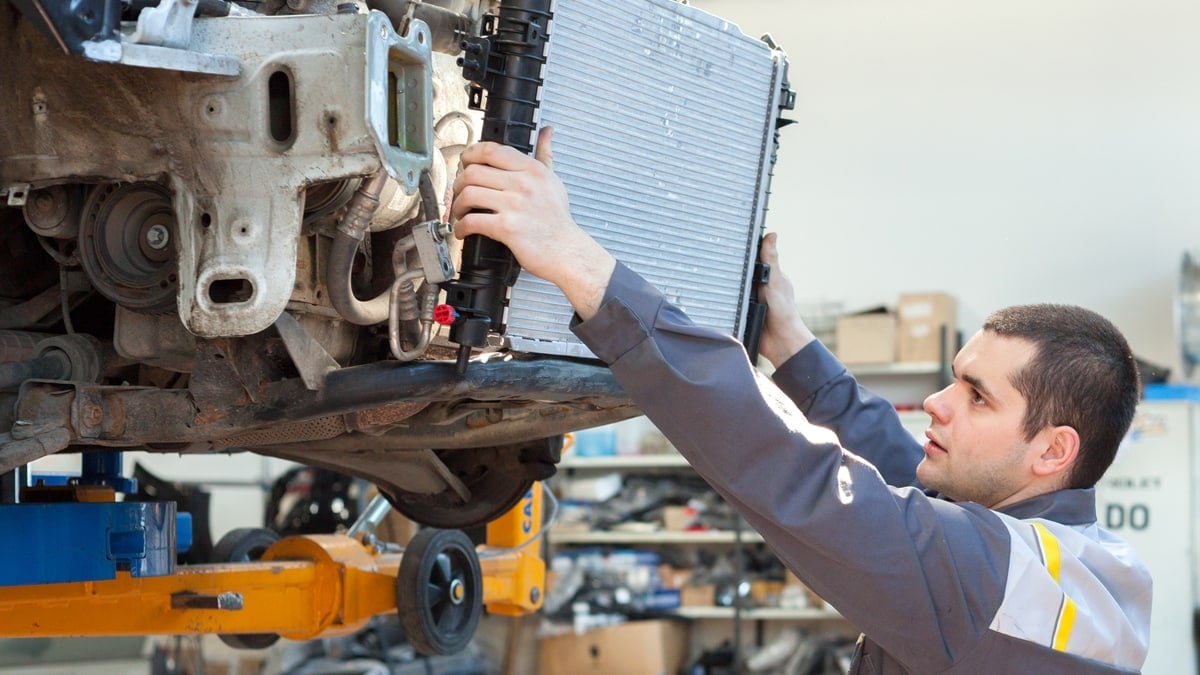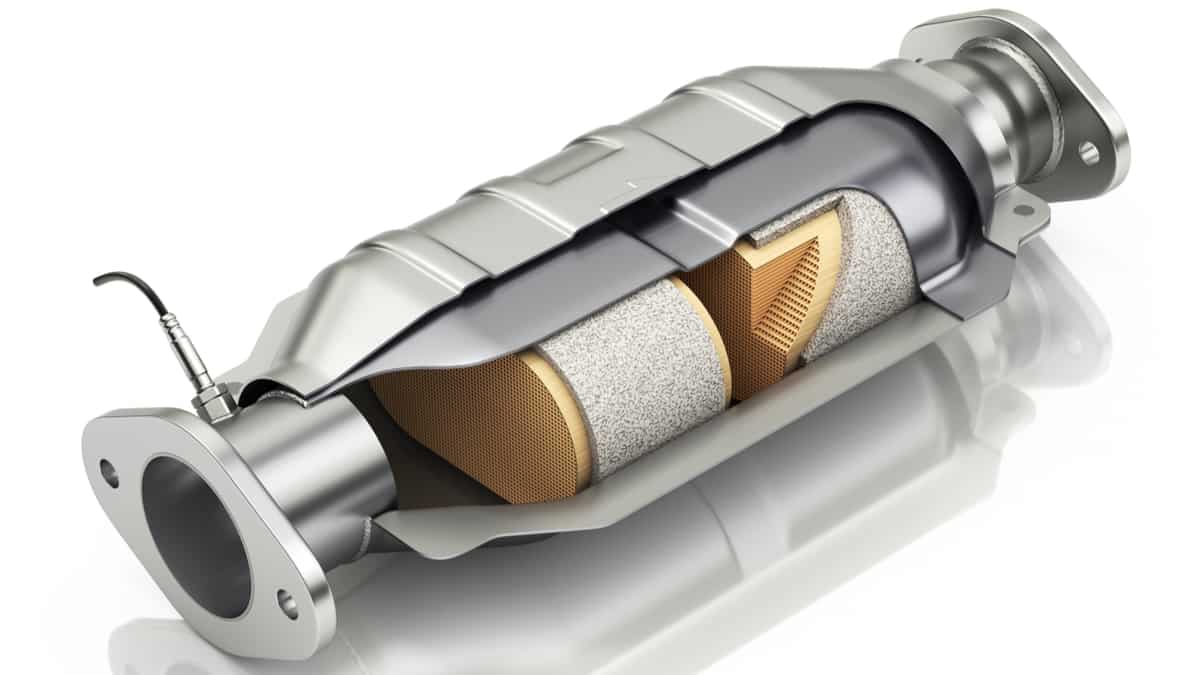The car’s fuel system contains several critical components that must be in optimal condition to keep the vehicle running smoothly. One such part is the fuel filter. It has an important job and it must remain free of clogs to provide fuel to the engine. That’s why you should know the symptoms of a clogged fuel filter before your car won’t run.
In this guide, we cover the top clogged fuel filter symptoms and explain what this part does. We look at where it’s located, the cost to replace it and show you how to diagnose a clogged filter. Finally, you will get a few answers to questions that have been on your mind.
Symptoms Of A Bad Or Clogged Fuel Filter
When the fuel filter clogs, the Check Engine Light should come on. You will also notice poor engine performance, a stalling engine and you may have trouble starting the car. It can also cause a misfiring engine or a rough idle, both of which make it difficult to get where you are going.
Take a look at these six symptoms closer.
1. Check Engine Light
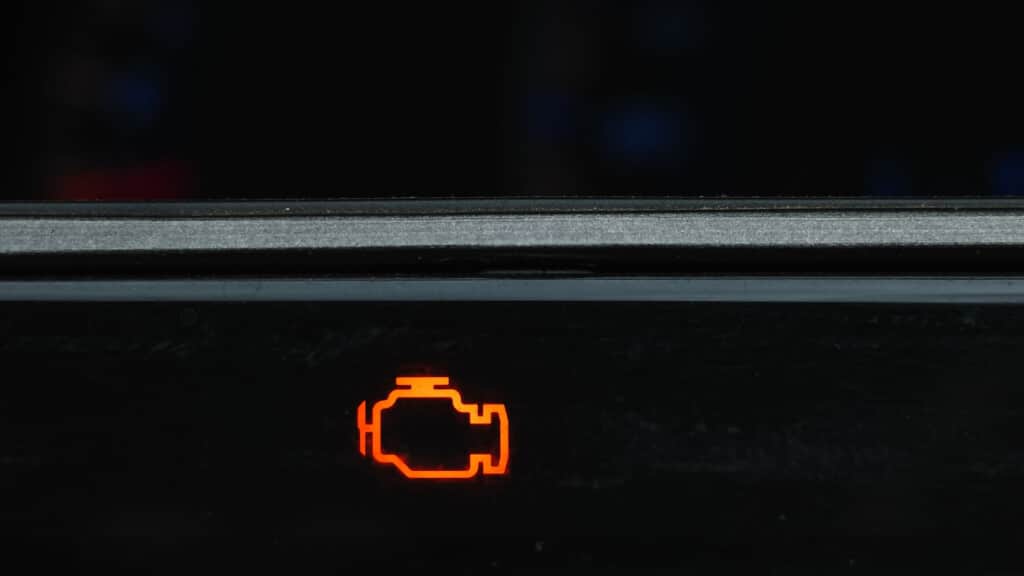
When the injectors can’t get enough of the pressurized fuel, the computer recognizes the imbalance. The system sets a code in the system, normally something similar to P0171 – System Too Lean. A lean-running engine means there’s more air in the combustion chamber than there should be. There could also be codes related to a misfire if that’s occurring.
To determine what code is shown, you need a compatible scanner. You can reference the information in our online trouble code library to see what the fault is.
2. Poor Engine Performance
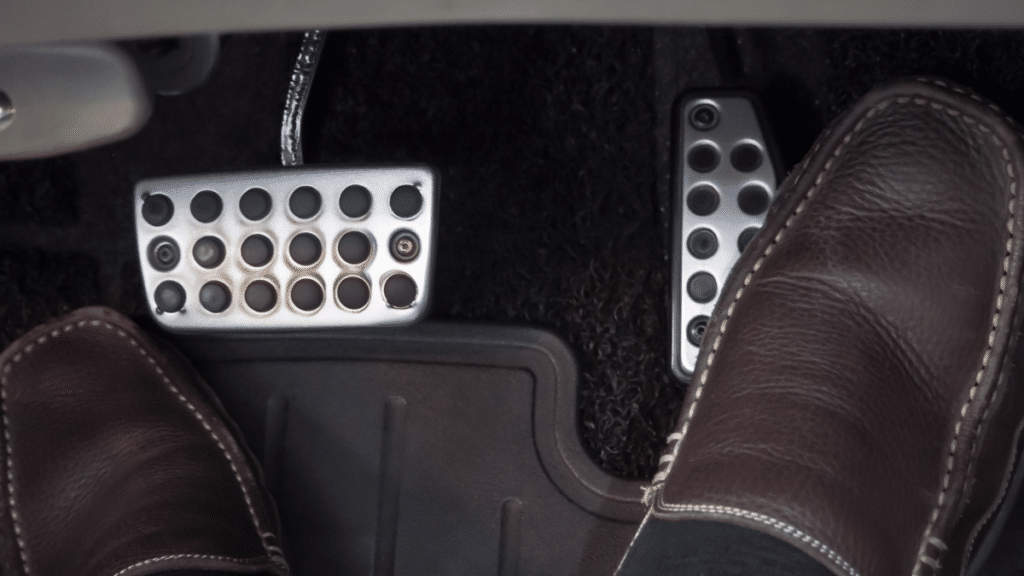
The clogged fuel filter is going to create a decrease in engine performance. You may notice some hesitation, sputtering or surging, especially when the vehicle is under a heavy load.
At first, you may not notice any of the symptoms during normal driving. It could only become a problem if you are trying to climb a steep incline or towing. Yet, the fuel restriction will get worse until you notice it all the time. When that happens, there will also be a drop in fuel economy.
Poor performance may not seem like a dangerous situation, but it can turn quickly. Imagine having trouble accelerating in the middle of trying to merge with highway traffic. That’s why it’s important to check the fuel filter before it gets this bad.
3. Stalling Engine
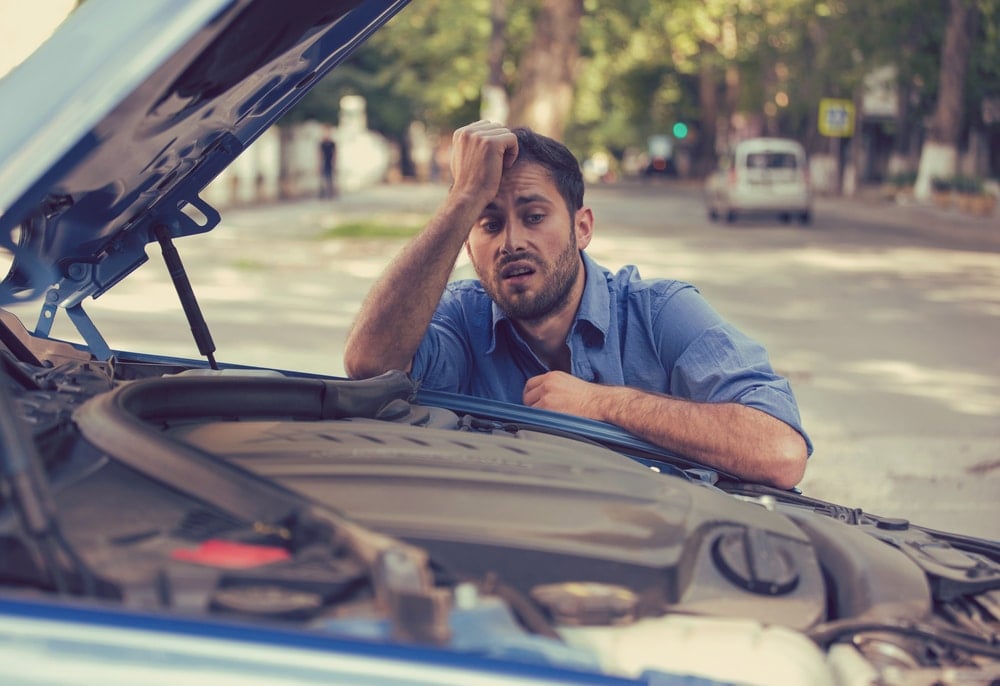
Once the performance problems increase, the engine could start stalling. This stalling condition comes from a lack of fuel in the engine.
The more the filter clogs, the more often the engine will stall. While you may be able to start the engine back up again, this stalling puts you in a dangerous situation, especially if you are in a lot of traffic.
4. Hard Starting
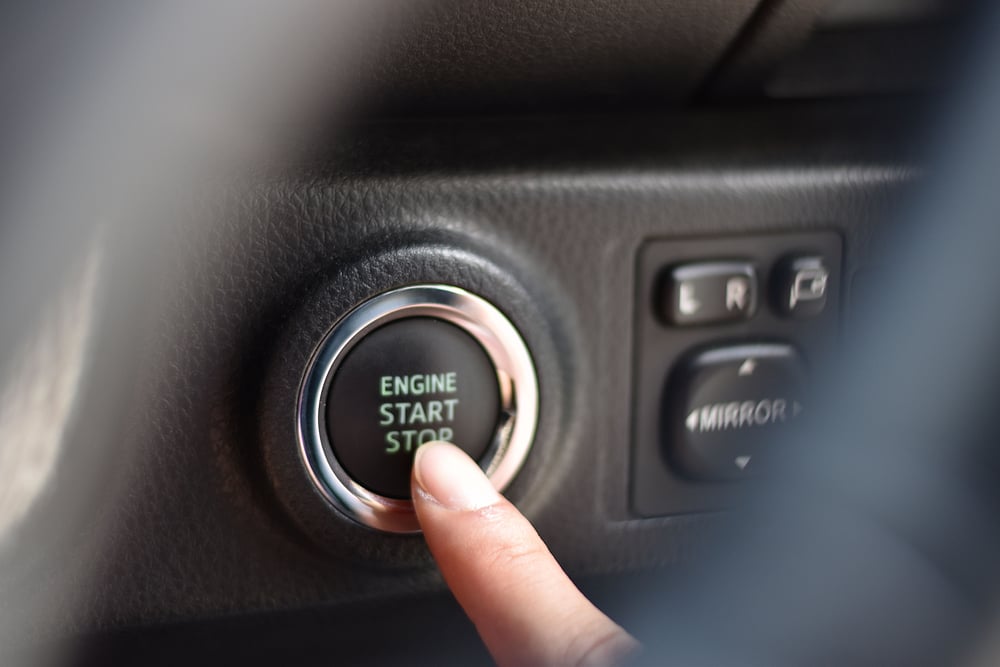
A bad fuel filter shouldn’t prevent the engine from starting unless it’s blocked. Yet, it can make it more difficult to get the engine started.
The dirty filter leads to erratic flow, so you may spend more time cranking the engine than normal. Depending on how bad the clog is, the car may run fine once you start it. You may or may not notice other performance issues while driving.
5. Misfiring Engine
Clogged fuel filters keep gas from getting to the engine. This low-pressure situation is going to lead to a misfiring condition.
Misfiring feels like severe hesitation from the engine. Continuing to drive like this can lead to bigger problems, such as fouled-out spark plugs and a damaged catalytic converter.
6. Rough Idle
Among the performance problems, you can also count on a rough idle. Your car should idle between 600 and 1,000 RPMs in most situations. If it’s lower or higher than that, there could be a problem with the fuel filter.
To figure out if your car idle is off, it’s best to reference the service manual. Here you gain guidance as to what’s normal for your particular vehicle.
What Is The Function Of A Fuel Filter?
Gasoline naturally contains some deposits, contaminants and impurities. These particles can settle in the bottom of your gas tank until they are pumped out into the system. However, a fuel filter stands in the way of the debris harming the vehicle.
The fuel filter works as a barrier to trap contaminants before they circulate through the system. Yet, the filter holds onto these impurities until you change it. Over time, the debris can lead to a clog that restricts the flow of fuel.
Where Is The Fuel Filter Located?

Fuel filters are located anywhere between the engine and the gas tank. They are also found on both gasoline and diesel models. Your car can have an inline fuel filter, which is the most common. This filter sits between two hose connections in the fuel system. It could also be found in or on the tank.
Fuel filters have several types of adapters. Your car may use a push-on filter with tubes that slide into the hoses. These are often secured by clamps. Otherwise, a threaded fuel filter is used with input and output tubes that screw into their respective locations.
How Much Does It Cost To Replace A Fuel Filter?
You can expect a cost of $50 to $150 to replace the fuel filter. The fuel filter itself is not an expensive part, costing between $10 and $100 for most vehicles.
Depending on the location of the fuel filter, you may be able to change it out yourself in less than thirty minutes. Some people try to clean out a clogged filter, which doesn’t always make sense considering the low cost of replacement.
If the fuel filter is difficult to get to, you may need to visit a professional mechanic. The job may require special tools or more expertise. In this case, you could spend an hour or two on labor charges to have it replaced.
Can You Test If The Fuel Filter Is Clogged?
You can take off the fuel filter to inspect it. Most people only want to do this if it’s easy to get to. If the filter has a window on it, you should be able to see inside of it. If the inside looks dirty, dark or gummed, you should replace it.
You can also perform this simple test with caution if there’s no window to look through.
- Drain the gas out of the fuel filter into a container. This gasoline needs to be properly disposed of at a local recycling center.
- Clean the inlet of the filter with your shop rag.
- Put a shop towel down on your workbench.
- While working over the shop towel, blow into the inlet port.
If the filter isn’t clogged, you should be able to blow through without resistance. However, once the filter is plugged up, you will have trouble blowing inside of it. Once you are finished, remember to clean up. Gasoline is flammable and hazardous. Don’t throw any of the wet rags into the trash.
If you don’t want to test the fuel filter, you could simply replace it. If you haven’t kept up with the regular maintenance, this might be your better option. It’s typically our recommendation, especially if you are trying to rule out other fuel-related problems.
You can also test the fuel pressure and if it’s low, it’s as strong sign that the fuel filter is clogged. However, low fuel pressure can be caused by some other issues also.
How Often Should the Fuel Filter Be Changed?
Changing the fuel filter is considered part of the regular maintenance schedule. For that reason, the recommendations are different based on the manufacturer. With most vehicles, the recommendation is every two years or 30,000 miles, whichever comes first.
Yet, there are some contradictions to these guidelines. For example, if you drive on unpaved roads or hit the trails often, you may need to change the filter more often and look at performing other maintenance tasks more frequently.
There are also some cars that have a “lifetime” filter built directly into the fuel pump. These aren’t subject to service intervals. Your best bet is to reference the owner’s manual and contact a professional mechanic if you notice any strange symptoms.
As mechanics ourselves, we believe in the power of prevention over repair. If you follow the recommendations, you can head off a lot of trouble.
What happens when the fuel filter is dirty?
Fuel flow to the engine becomes restricted. The engine starts to run lean, so you may see the Check Engine Light. You can also start experiencing several performance issues, from stalling to misfiring. The engine may also idle roughly or you could have trouble starting the motor.
Can you drive with a bad fuel filter?
At first, it may seem okay to drive with a clogged fuel filter. Even if the car is still running, the performance is only going to get worse. If it stalls while you are in traffic, it could lead to an accident. For that reason, we recommend having the filter changed at the first sign of trouble.
How do you unclog a fuel filter?
Depending on what type of filter you have, you may be able to clean it out with parts cleaner. You can also gently tap along the sides of the filter to see if any debris comes out. Otherwise, you may prefer to replace the filter with a new one since they aren’t generally expensive.
Will a bad fuel filter throw a code?
If the filter is preventing fuel from flowing freely to the engine, it should set a code and turn on the Check Engine Light. Most codes related to this problem will reveal a lean-running condition, but there could also be codes for misfiring if the engine is struggling to run.
Is replacing a fuel filter difficult?
It depends on where the fuel filter is located. If you have a fuel filter in line with the system, you should be able to remove it and replace it quickly. If the filter is located in the tank, these are more difficult to work with. Look at your service manual for the proper procedures.
The fuel filter may seem like an unimportant part of the car, but it has a massive role in keeping the vehicle running at its best. When the fuel filter becomes clogged, every ride is going to be unenjoyable and possibly dangerous. Thankfully, it’s not normally a big deal to change the fuel filter and restore the ride.
If you have some mechanical experience, you can inspect, test or replace the filter yourself on most car models. However, there are some fuel filter replacement jobs that are more complicated, so don’t be afraid to ask for help. Your local auto repair shop can get a new filter in place, so you can get back on the road.
Categories: Engine, Maintenance
